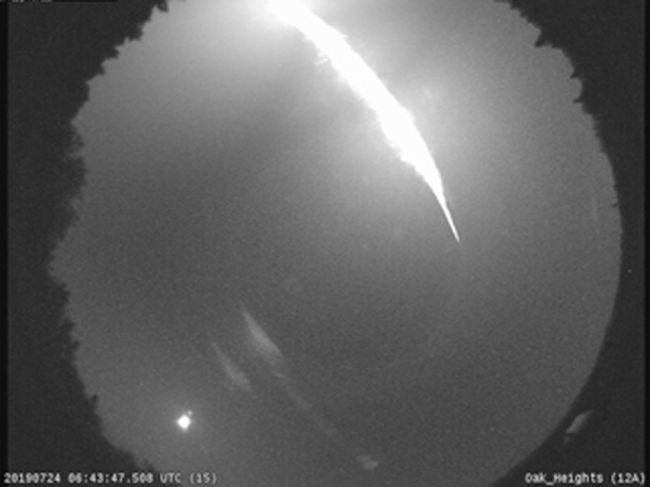
The flash of light from a beachball-size space rock was recorded by 10 all-sky cameras deployed by Western University in London, Canada, and mounted across southern Ontario and Quebec. While meteorites could have fallen in the Bancroft area (about 3.5 hours northeast of Toronto), footage was captured as far away as Montreal — about 260 miles (420 kilometers) east of Bancroft.
The fireball was likely visible in the United States as well, as there are several pending reports on the American Meteor Society's website from that time, from observers in New York state and Pennsylvania.
"We suspect meteorites made it to the ground because the fireball ended very low in the atmosphere, just to the west of Bancroft, and slowed down significantly," Peter Brown, a Western professor who specializes in meteorites, said in a statement. "This is a good indicator that material survived."
At first glance, it appears the fireball first showed up at 2:44 a.m. EDT over Lake Ontario (near Oshawa) at an altitude of about 60 miles (93 kilometers). It moved northeast in view of the Ontario towns of Clarington and Peterborough, flashing bright flares before disappearing from view west of Bancroft.
The space rock pummeling through the atmosphere, also known as a meteoroid, was about 12 inches (30 centimeters) in diameter, according to the university. That size suggests that any possible meteorites — fragments that hit the ground — would be tens to hundreds of grams in mass.
"Meteorites can be recognized by their dark, often scalloped exterior," Western added. "Usually they will be denser than a 'normal' rock and will often be attracted to a magnet due to their metal content." But the university warned that those looking to find a meteorite should be aware that fragments belong to the person who owns the land where they're found, and that permission must be granted to search on private land.



Reader Comments
to our Newsletter